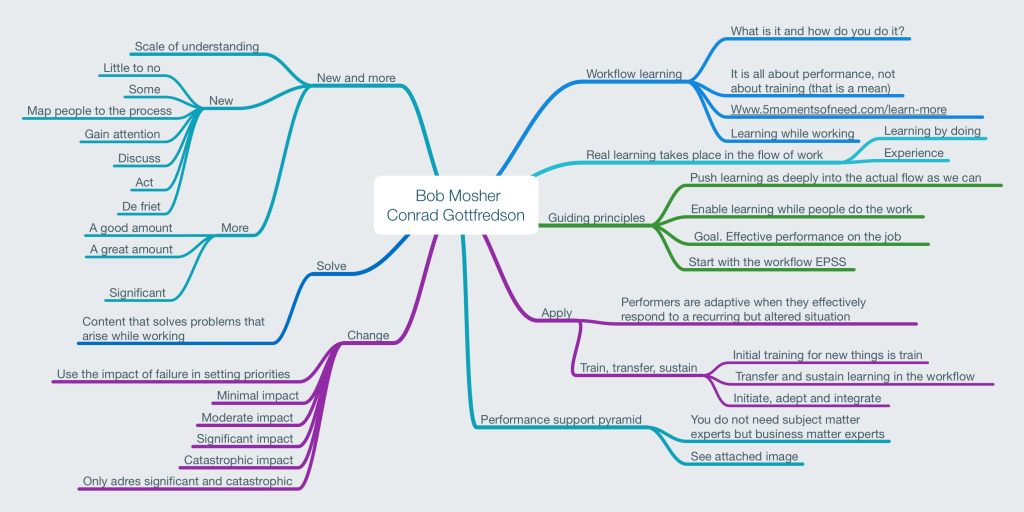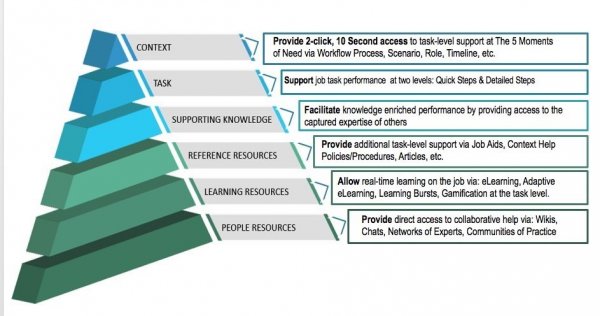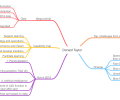The second day of Learning 2019. A full packed schedule with many sessions, keynotes, planned and unplanned meetings.
Today started early at 6.45 with an extra “Dutch session” by Molly Petroff from the St Vincent Hospital. Molly is a workflow specialist already for 12 years. She showed us how they got started and what they have learned along the way. They created based on the main processes in the hospital, a performance support environment using the five moments of learning need. For me, as a “tool man” I could not help noticing how simple the tooling is they use. It is a reference guide. They have used the work process to organize the content and create some context. It also became apparent to me that maintaining the content is at least as big of a problem as it is with learning.
I continued with performance support and the 5 moments of learning need with a session by Conrad Gottfredson and Bob Mosher

One of my main learnings was the performance support pyramid. Or maybe I should say rememberings because I did know it, but I forgot how powerful it is. It is a complete guide to create performance support content

The next session was the Keynote by Elliot Masie. It was full of energy but I liked his small session from Sunday much more

I attended a session on “Creating effective micro learning” by Karl Kapp. He sees micro learning more as performance support tool. Main take-away for me where the 6 types of micro learning.

The last session I want to report on is the keynote from Richard Cullata. He gave as his view on the future of learning with a number of interesting guests. I liked this session. Joseph South had probably the most fun part debunking “neuromyths”:
- Learning styles do not exist (learning preferences do)
- We use only 10% of our brain capacity. Not true we use our full brain everyday
- The split between the left and right brain with specific functions is also a myth.




